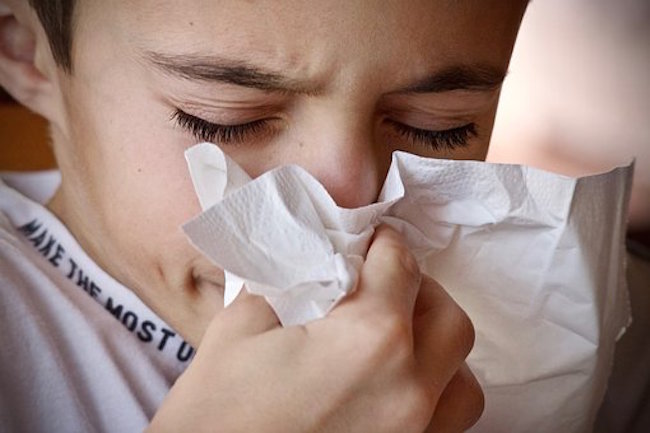Measles — Everything You Need to Know About This Infection from Mercola
If you have heard about measles, you might be wondering what you should be aware of regarding this disease. Keep reading to learn about measles, how this viral infection spreads, its symptoms and how you can help prevent and treat it.
Basic Facts About Measles
Also called rubeola, measles is a highly contagious, acute viral infection of the respiratory system. It’s transmitted via respiratory droplets (infected saliva or mucus) in the air, spreading easily from person to person through a cough or sneeze.
The measles virus can stay airborne or live on surfaces for up to two hours, which means anyone who breathes the contaminated air or touches the infected surface can become infected.1 You need to know the symptoms of measles, especially if you think you or a family member is infected. The symptoms often appear within 14 days of exposure to the virus.
Like the flu, it starts with a fever, muscle aches, cough and runny nose, but it is the inflamed or pink eyes and the white spots inside the mouth that give it away. Two to four days later, those who are infected will get a red, blotchy skin rash that will spread over their body.2 In some cases, measles may lead to certain complications:3,4
•1 out of every 10 infected children will develop an ear infection that can lead to permanent hearing loss
•1 out of every 20 children with measles will get pneumonia, which is the most common cause of death from the infection in young children
•1 out of 1,000 people with measles can develop encephalitis (brain inflammation), which could lead to brain damage
The world Health Organization (WHO) reports that measles kills more than 100,000 people (mostly children under age 5), all over the world each year.5 But keep in mind that these deaths and complications mainly occur in undeveloped and developing countries with low incomes and weak health services, where poor nutrition is common because of poverty.
In fact, child mortality due to measles is 95 percent greater in malnourished children in less developed countries than those in developed ones. Once nutrition improves, complications and death are radically diminished.
Despite how mainstream media portrays this disease, measles mortality is actually quite rare in industrialized nations. In the U.S., the last documented deaths directly attributed to measles were in 2003, according to the Centers for Disease Control and Prevention (CDC).6 One death was a child with a chronic disease who received a bone marrow transplant and was found post mortem to be positive for measles. The second death was a 75-year-old man from Israel, who had measles encephalitis and encephalopathy.
Only two deaths occurred in the U.S. because of measles complications in 2009. No deaths were seen in 2008, 2007 and 2006, and only one was recorded in 2005.7 (NOTE: One death of a person in 2015 who didn’t have classic measles symptoms was listed after an autopsy as dying from pneumonia as a complication of measles.8)
Is Vaccination the Key to Preventing Measles?
According to the CDC, this disease can be prevented with a measles-mumps-rubella (MMR) vaccine, which they claim provides long-term protection against all strains of measles. However, this vaccine offers only temporary artificial immunity, and there is an increasing amount of evidence that even vaccinated people can both get measles and spread measles, even after two doses of the MMR vaccine, whether they have visible symptoms of the disease or not.9,10




